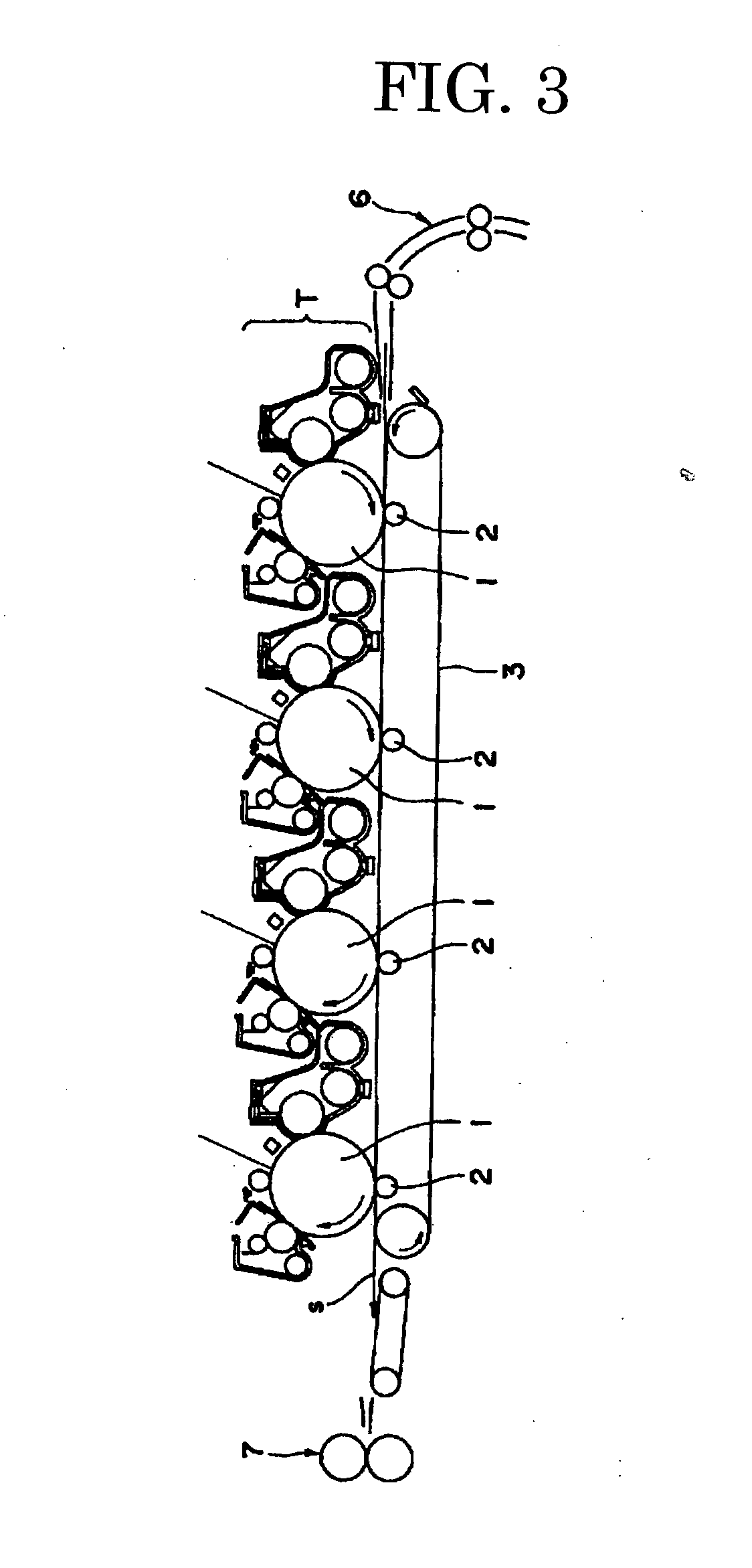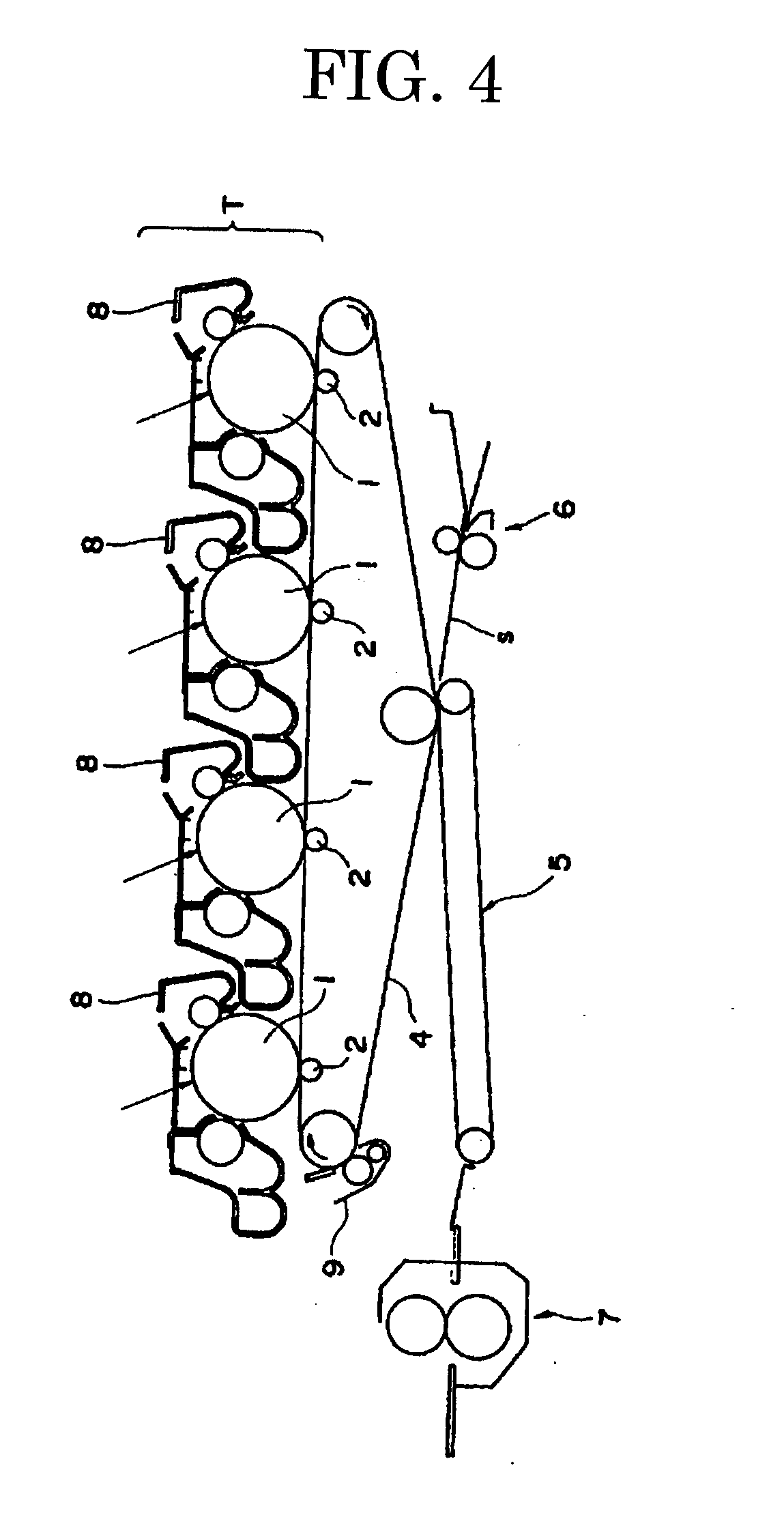Toner, image forming apparatus, image forming method, process cartridge, and developer
a technology of image forming apparatus and developer, which is applied in the direction of electrographic process apparatus, electrographic process, instruments, etc., can solve the problems of degrading the heat resistance storage stability of toner, unable to preserve the inherent flowability of toner, and solidifying toner, so as to achieve the ultimate low-temperature fixability and prevent the effect of toner flowability degradation
- Summary
- Abstract
- Description
- Claims
- Application Information
AI Technical Summary
Benefits of technology
Problems solved by technology
Method used
Image
Examples
example 1
Synthesis of Fine Resin Particle Emulsion
[0216]A reaction vessel equipped with a stirring bar and a thermometer was charged with water (683 parts), a sodium salt of sulfuric acid ester of methacrylic acid-ethylene oxide adduct (ELEMINOL RS-30, manufactured by Sanyo Chemical Industries, Ltd.) (11 parts), polylactate (10 parts), styrene (60 parts), methacrylic acid (100 parts), butyl acrylate (70 parts), and ammonium persulfate (1 part), and the resulting mixture was stirred for 30 minutes at 3,800 rpm, to thereby obtain a white emulsion. The white emulsion was heated until the internal temperature became 75° C., and was allowed to react for 4 hours. To this, a 1% ammonium persulfate aqueous solution (30 parts) was added, followed by aging for 6 hours at 75° C., to thereby obtain Particle Dispersion Liquid 1 (an aqueous dispersion liquid of a vinyl resin (a copolymer of styrene / methacrylic acid / butyl acrylate / sodium salt of sulfuric acid ester of methacrylic acid ethylene oxide adduct...
example 2
[0235]A toner was obtained in the same manner as Example 1, except that Particle Dispersion Liquid 1 used in Example 1 was changed to Particle Dispersion Liquid 2 described below, and Material-Dissolved Liquid 1 used for the oil phase was changed to Material-Dissolved Liquid 2 described below. The physical properties of the obtained toner are shown in Table 1, and the results of evaluation of the toner by the evaluator A are shown in Table 2.
[0236]A reaction vessel equipped with a stirring bar and a thermometer was charged with water (683 parts), a sodium salt of sulfuric acid ester of methacrylic acid-ethylene oxide adduct (ELEMINOL RS-30, manufactured by Sanyo Chemical Industries, Ltd.) (11 parts), polylactate (10 parts), styrene (70 parts), methacrylic acid (90 parts), butyl acrylate (60 parts), and ammonium persulfate (1 part), and the resulting mixture was stirred for 30 minutes at 3,800 rpm, to thereby obtain a white emulsion. The white emulsion was heated until the internal t...
example 3
[0238]A toner was obtained in the same manner as Example 1, except that Particle Dispersion Liquid 1 used in Example 1 was changed to Particle Dispersion Liquid 3 described below, and Material-Dissolved Liquid 1 used for the oil phase was changed to Material-Dissolved Liquid 2 described above. The physical properties of the obtained toner are shown in Table 1, and the results of evaluation of the toner by the evaluator A are shown in Table 2.
[0239]A reaction vessel equipped with a stirring bar and a thermometer was charged with water (683 parts), a sodium salt of sulfuric acid ester of methacrylic acid-ethylene oxide adduct (ELEMINOL RS-30, manufactured by Sanyo Chemical Industries, Ltd.) (11 parts), polylactate (10 parts), styrene (60 parts), methacrylic acid (100 parts), butyl acrylate (70 parts), and ammonium persulfate (1 part), and the resulting mixture was stirred for 20 minutes at 2,000 rpm, to thereby obtain a white emulsion. The white emulsion was heated until the internal ...
PUM
| Property | Measurement | Unit |
|---|---|---|
| frequency | aaaaa | aaaaa |
| temperature | aaaaa | aaaaa |
| tan δ | aaaaa | aaaaa |
Abstract
Description
Claims
Application Information
 Login to View More
Login to View More - R&D
- Intellectual Property
- Life Sciences
- Materials
- Tech Scout
- Unparalleled Data Quality
- Higher Quality Content
- 60% Fewer Hallucinations
Browse by: Latest US Patents, China's latest patents, Technical Efficacy Thesaurus, Application Domain, Technology Topic, Popular Technical Reports.
© 2025 PatSnap. All rights reserved.Legal|Privacy policy|Modern Slavery Act Transparency Statement|Sitemap|About US| Contact US: help@patsnap.com



